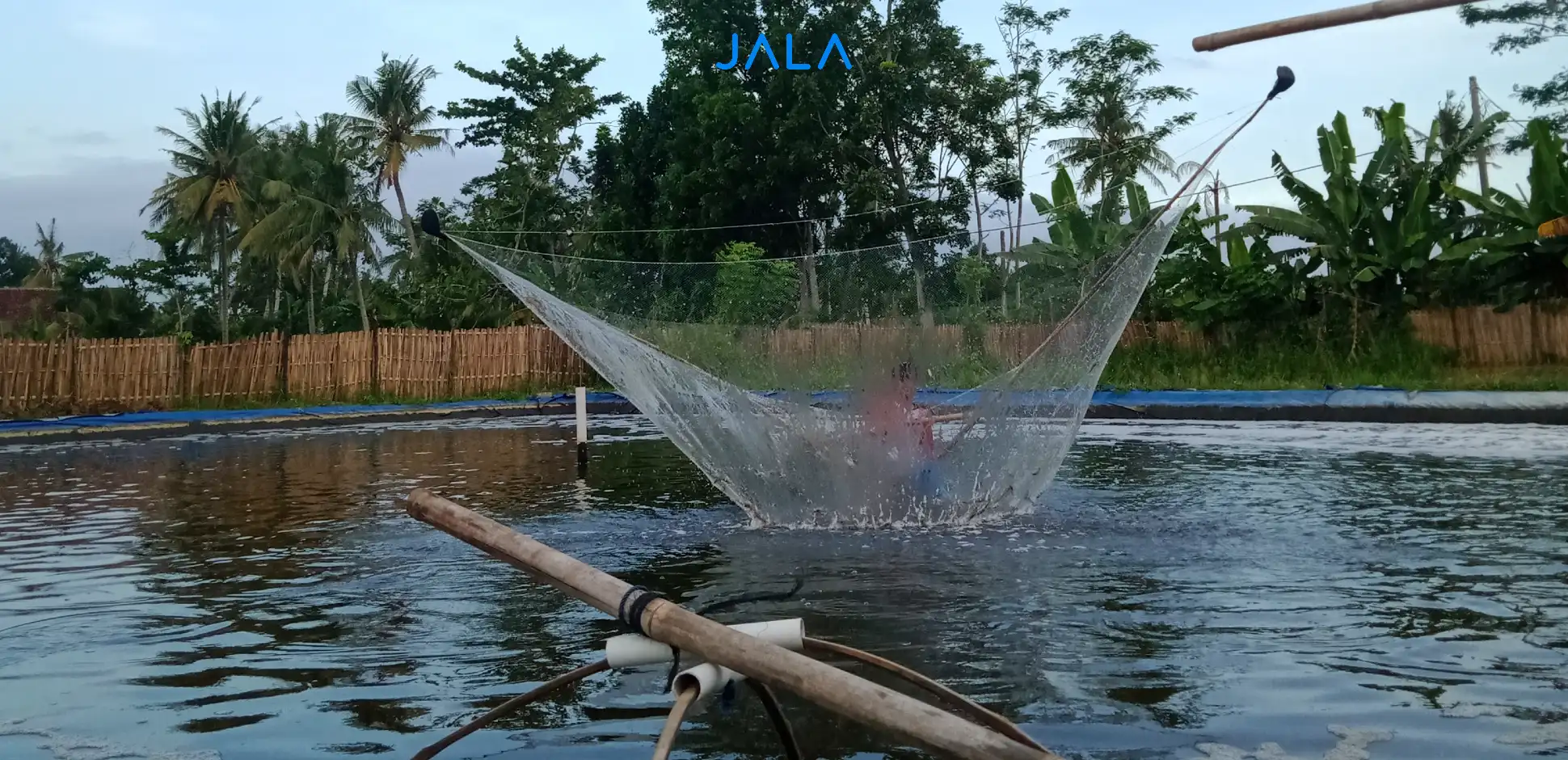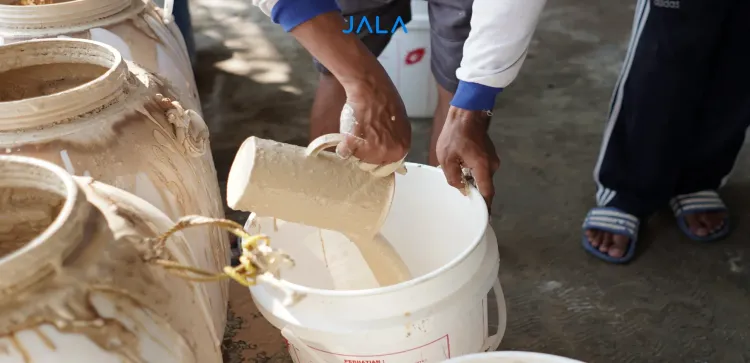
Harvest is the final step of cultivation. In vannamei shrimp cultivation, there are two types of harvest, namely total and partial harvest. Partial harvest is the activity of taking a portion of shrimp from the farm. There are at least two considerations in doing partial harvest, which is to increase productivity and save cultivation costs.
What are the things that shrimp farmers should take note of before doing a partial harvest? Read the full explanation in this article!
What is Partial Harvest?
Partial harvest involves taking a portion of the shrimp from the pond and leaving the rest to be cultivated until a certain time. The primary purpose of partial harvest is to increase productivity by providing the remaining shrimp in the pond with more space to grow.
By reducing the biomass of shrimp in the pond, the carrying capacity of the pond can be sustained better. After partial harvest, shrimp will usually grow faster. Additionally, reducing shrimp density in the pond can decrease the risk of disease.
Apart from productivity aspects, partial harvest is also carried out due to economic considerations. Larger-sized shrimp at the end of cultivation will naturally gain a better price, thus increasing the possibility of getting more profits. Moreover, for farmers with limited capital, partial harvest is a strategy to sustain the costs for the next cultivation.
According to Romadhona et al. (2015), partial harvest can minimize contributions to environmental pollution and provide greater benefits for the shrimp farm business. The reduction of shrimp biomass in the pond also offers benefits such as reduced feed input and increased dissolved oxygen (DO). Waste content such as ammonia produced at the end of the cultivation period can be minimized.
What are the Things to Note before Doing Partial Harvest?
Before conducting partial harvest, farmers should take note of several things to ensure that the cultivation can still run smoothly after harvest. First, do not dry out all the water in the pond to prevent stress in shrimp. Turn off paddlewheels to avoid disturbance to the harvesting activities.
Partial harvest uses passive equipment such as a cast net, thus there is no need to reduce water volume in the pond. Partial harvest also requires relatively few permanent labor, thus minimizing harvesting costs.
Also, partial harvest is commonly done 1-3 times with an interval of 7-14 days between each harvest. The first partial harvest can be done when the shrimp has reached a weight of 10-13 grams per individual or when they reach size 100. The consideration is that at this size, the shrimp are considered to have a fairly good market value. The larger the shrimp, the higher the price.
How to Do Partial Harvest for Shrimp
Taking into account the above considerations, you are ready to conduct a partial harvest. Here are the steps to follow when conducting a partial harvest.
1. Determine the amount of shrimp to harvest
The number of shrimp taken is 20-30% of the estimated shrimp biomass in the pond. The number of shrimp to be harvested is determined by subtracting the estimated shrimp biomass that can still be accommodated in the next two weeks.
2. Sterilize the harvesting equipment
Next, prepare the equipment for harvesting, such as a cast net, container, and ice. Make sure to sterilize the cast net to prevent the spread of diseases to shrimp. Also, make sure that there is no dirt or mud from the pond that get stuck on the net to prevent poisoning the shrimp.
3. Cast the net into the pond
The sterilized net can now be cast into the pond. Make sure to only take no more than 30% of shrimp from the pond. If you are going to do partial harvest from another pond, sterilize the net again before using it in the next pond.
4. Store shrimp with ice
After the shrimp have been harvested, transfer them into a container with water and ice at a temperature of below 5°C to maintain their quality. Shrimp can be distributed to buyers.
5 Tips for a Successful Partial Harvest to Know
Aside from following the correct steps for a partial harvest, here are some tips you should know for a successful harvest.
- A few days before harvesting, provide high-quality feed with added vitamins, minerals, and immunostimulants to shrimp. Some farmers add specific minerals to prevent shrimp from molting shortly before harvesting to make their bodies denser and harder, thus improving their quality.
- Conduct harvesting when the temperature is low or the sunlight is not too bright.
- Perform partial harvests as quickly as possible. If harvesting is done in more than one pond, finish harvesting from the pond first before moving to the next one.
- Ensure no shrimp fall back into the pond during netting.
- Perform siphoning one day after conducting partial harvests. This is to remove dead shrimp from the harvesting process.
Conclusion
Partial harvest is a technique of taking a portion of shrimp from the pond to increase productivity and secure cultivation costs for the next cycle.
Before conducting a partial harvest, make sure that shrimp are not stressed, and the harvesting equipment has been sterilized. Conduct harvest quickly at low temperatures, taking a maximum of 30% of shrimp from the pond.
If you are planning a partial or total harvest, you can use the Simulation Feature on JALA App for easier planning. Simply enter information such as pond area, harvesting period, biomass, partial harvesting plans, target SR, and size to see harvest estimates.
Moreover, JALA App also provides the Shrimp Price Feature to check for current shrimp prices in your area. By viewing price estimates in the market, you can determine the best selling price for your shrimp.
Haven't joined JALA App yet? Register now at app.jala.tech or download the mobile version from the Google Play Store or the App Store!





